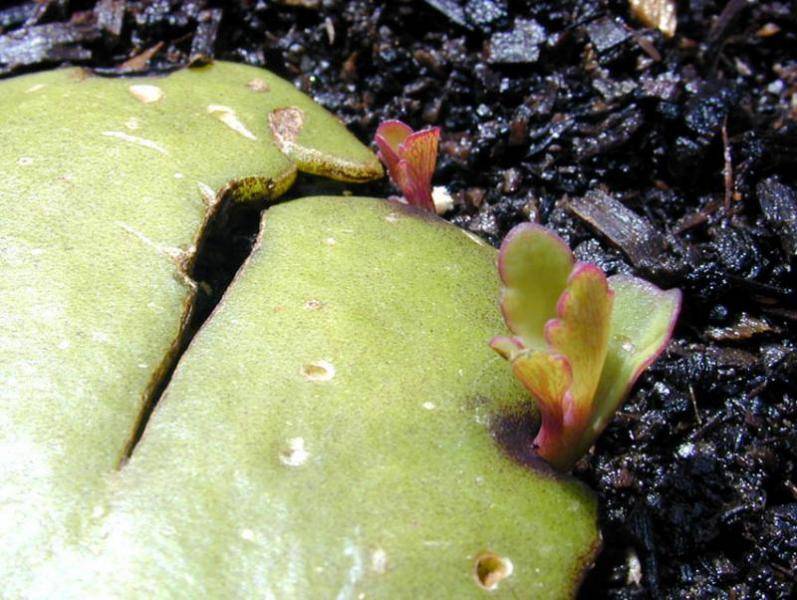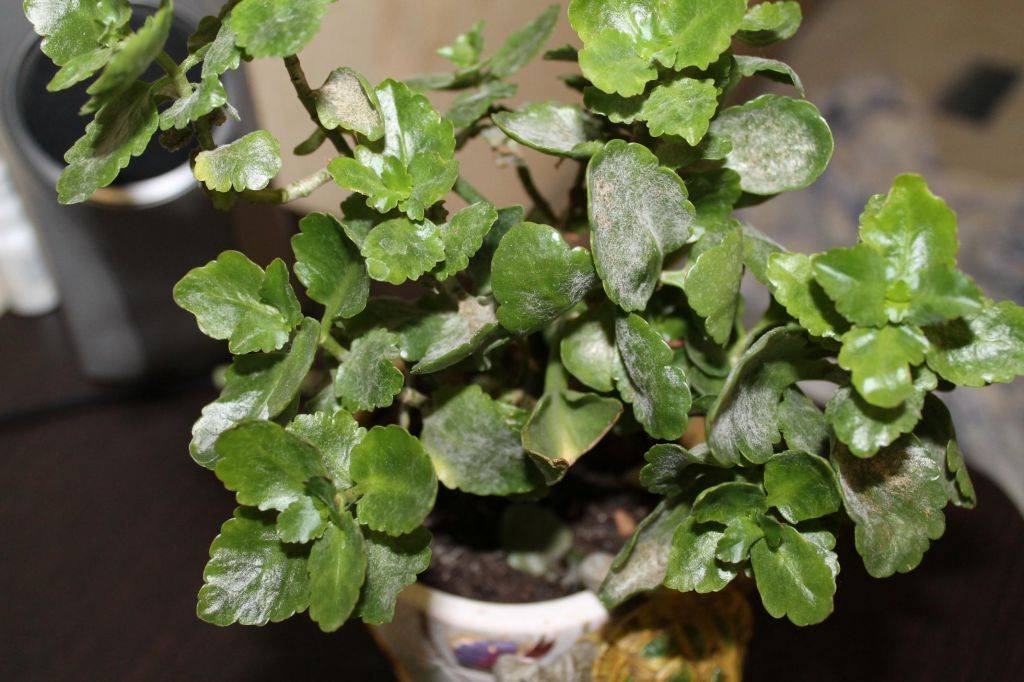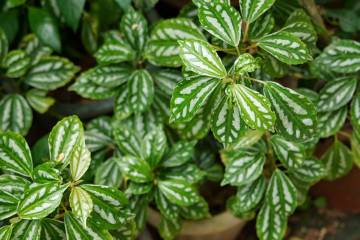Kalanchoe - breeding at home step by step
Content:
Kalanchoe is an amazing flower that is popularly called the tree of life or homemade ginseng. The plant surprises with its medicinal properties and at the same time has a high decorative effect. Casual guests or relatives, seeing a bright flower in an apartment, are often asked to share such beauty. The owners of the plant usually do not mind and are happy to tell you how to propagate the Kalanchoe and take it home.
How to breed Kalanchoe at home
It is easier to propagate plants in greenhouses, as you can create comfortable conditions. Kalanchoe is one of the succulents - it has a thick juicy stem and fleshy leaves. This type is distinguished by its unpretentiousness and beautiful flowering.
Today, several hundred Kalanchoe can be found on sale. They all have their own characteristics. Some have a special leaf shape, others have flower color. Therefore, many collectors strive to grow new pieces.
Kalanchoe reproduces relatively simply, but the characteristics of each variety must be taken into account. For example, in Degremon, small children appear at the edges of the leaves. They look like a miniature Kalanchoe with roots. It is enough to carefully remove them and plant them in the ground. After which they grow beautifully.
The ways
In total, five breeding options are distinguished - by buds, offspring, children, leaves, cuttings. Each of them has its own advantages and disadvantages.
During flowering Kalanchoe should not be touched. Usually they wait for spring or autumn in order to select material for germination.
An example of step-by-step actions:
- A 5-10 cm long stalk is cut from the mother plant.
- Extra leaves are removed from it.
- The stalk is placed in water or immediately buried in the ground.
- If the option with water germination is chosen, then it remains to wait for the roots and then transplant the branch.
If the ground method of rooting is chosen, then the Kalanchoe needs careful watering.
Reproduction of Kalanchoe by brood buds (children)
The advantage of succulents is that they can be propagated in many different ways. Some species are called viviparous. This name was not given by chance.
If the babies are not ripped off, then over time they themselves will fall away from the mother plant. Then they will calmly germinate in the soil. Collecting the buds is very simple: it is enough to gently run your hand over the sheet.
Children need to be planted in a shallow flat pot in the ground intended for planting succulents. They have roots and therefore do not need additional germination measures. It is enough to dig a shallow hole, carefully put the kidney there and lightly sprinkle the roots with earth.
As soon as the children get stronger and grow up, they are separated from each other and transplanted into other pots.
How to propagate Kalanchoe with axillary buds
It should be noted that Kalanchoe is an ornamental plant that has many varieties. In some varieties, old leaves fall off. Fresh buds appear in their places, which eventually form into small branches.
The shoot is rooted in a small glass with a peat-sand mixture. The top of the Kalanchoe can be covered with a plastic bag. Usually, the roots appear after about two weeks, and then within a month the branch begins to actively grow.
Only some varieties of Kalanchoe can be propagated in a similar way. Most often these are paniculate-flowered species. Others may not germinate in this way.
Reproduction of Kalanchoe by cuttings
The easiest and most reliable option available to beginners. In the fall, immediately after flowering, the plant is pruned. After this procedure, many branches remain. You need to sort them out and take only strong, healthy specimens.
For standard cuttings, branches about 10 cm long are suitable, but you can also take smaller shoots about 5 cm. The lower leaves must be torn off, and the cut point must be dried. To do this, the cutting is left in the air for 6-7 hours. You can sprinkle the cut with crushed activated carbon.
Next, the twig is placed in a small earthen pot with peat. It is not necessary to plant the cutting deeply, it is enough to deepen it by 3-4 cm. On top of the container, cover the container with a glass jar or a plastic bag. Such a measure is optional, but it simplifies germination.
In Kalanchoe, reproduction affects the flowering rate. From cuttings, the plant begins to bloom after six months, and from a leaf only after a couple of years. This point also needs to be considered when choosing how to breed succulents.
Propagation by leaves and leaf blades
Some plant species have amazing properties. They can germinate not only from leaves and stems, but also from parts of leaf blades. It is enough to plant a piece and it will give roots.
This type of reproduction will require special care. Since a violation of technology will only lead to the fact that the sheet will rot. To begin with, prepare a special soil mixture.
It will require leafy earth, humus, peat - they are taken in equal parts and mixed. Additionally, add half of the river sand. Such a composition retains moisture for a long time.
The mixture is poured into a small pot, well moistened. In Kalanchoe, a healthy leaf without a root is cut off. Then the plate is gently pressed into the soil.
The place of the cut is carefully sprinkled with earth. The pot is covered with glass or a bag. It is necessary to control the level of soil moisture. Under the right conditions, a baby will form on the leaf plate.
Gradually, it will get stronger and it can be transplanted into another container. The mother leaf will gradually die off by itself and dry out. A full-fledged miniature specimen of Kalanchoe will remain.
This propagation method is suitable for all varieties with fleshy thick leaves. This option is very difficult, since if the technology is violated, the plate will rot or dry out. Therefore, you need to carefully monitor the condition of the seedling.
Leaf propagation
Some types of succulents grow well from a regular leaf. To do this, you need to cut off a healthy Kalanchoe leaf, along with the petiole - its length should be at least 2 cm.
After this, the cut is left to air dry. Then the leaf is planted in moist peat. The petiole is buried to its full length. It is advisable to cover the top of the pot with glass or cellophane.
If you follow the technology, you can easily get a new copy of the plant. You can try to take a fallen leaf for breeding. If it is not dry, then it will give roots.
Such a Kalanchoe will bloom only in a few years.Sometimes the leaf is germinated through water. To do this, it is placed in a container so that the petiole constantly touches the moisture.
After the roots appear, the leaf is carefully deepened into the soil for succulents for further strengthening.
Reproduction of Kalanchoe offspring
Professional breeders rarely think about how the Kalanchoe reproduces. But ordinary people may well be surprised by the variety of options. Nevertheless, breeding through offspring is not very popular even among fans of this plant. In addition, we must not forget that only some varieties have young shoots.
Separate specimens grow from the buds next to the mother plant. They can be neatly separated during transplanting. Such a branch will already have a developed root system.
Landing is carried out in a special mixture. For its production, sand and well-disinfected soil are mixed in parts in a ratio of 8 to 2. After the offspring, it is transplanted into this soil and the plant grows quietly.

To stimulate the appearance of daughter processes, you need to slightly pinch the tops of the Kalanchoe
The difficulty with this method is that it is not always easy to divide the plant. The root system is tightly intertwined and you have to cut off excess parts. In this case, it is better to treat all the cuts with crushed coal, which will protect against fungal infections.
You can breed different varieties in this way. To facilitate the separation of the plant, the roots can be gently rinsed under running water - this will remove the soil and then it will be easier to understand how to plant the Kalanchoe.
How to propagate a flower by seed
A fairly rare method that is almost never used at home. It is suitable for breeding rare varieties that cannot be found alive. Kalanchoe seeds are bought in specialized stores.
For germination, a peat-sand substrate is used. It is preheated in the oven for thirty minutes - this is necessary in order to destroy pests. The seeds are soaked for a day in a weak pinkish solution of potassium permanganate.
Kalanchoe is planted in shallow small pots. Small grooves are made in the ground and seeds are placed in them. Top them lightly sprinkle with soil and watered.
It is necessary to maintain a distance of 4 cm between the seeds - this will facilitate further picking. It is better to plant in late winter and early spring. Cover the pots with glass or a plastic bag.
Once a day, the glass or bag is removed to allow the pots to air out. It is impossible to say with certainty how long the seedlings will appear. This usually takes 3-4 weeks.
You can divide the plants after the sprouts reach a height of several centimeters and each copy will have 4-5 leaves. Not all growers have an idea of how to plant a Kalanchoe after growing from seeds.
To do this, carefully pry each sprout with a spatula and remove it together with an earthen lump. Next, young plants are planted in separate pots. Further care is standard.
The flower will grow two to three years to full adulthood. Therefore, you do not need to wait for the sprout to bloom quickly.
You can try to get seeds of rare varieties yourself, at home. To do this, after flowering, you do not need to pick off the inflorescences. A dry capsule will form in their place, which will contain seeds.
Possible problems
For Kalanchoe, it is better to use cuttings propagation at home. This method is available to beginners, but if the technology is violated, you can destroy the branch.
The maternal specimen should be healthy, strong, large. Only in this case will it be possible to root a healthy plant.
Improper care
You need to carefully consider the choice of soil for growing Kalanchoe. If there is a large amount of peat in the ground, then it will retain moisture.In such soil, succulents quickly begin to rot.
Small black spots appear on the stem and leaves, which grow and cover the entire sprout. There is no cure for this problem. It is necessary to cut off the healthy part of the Kalanchoe and root it anew.
To reduce the likelihood of rot, you need to dry the sections well. Additionally, they are sprinkled with crushed activated carbon - this tool has an antiseptic effect.
Beginners do not think about how to cut Kalanchoe and use the tool at hand, without processing. But professionals only prune with a sharp, sterilized blade - processing the instrument is important to prevent infection.
You need to be careful about watering the seedlings. Lack of moisture is just as dangerous as excess. The soil should be slightly wet. If the cuttings or leaves are rooted in water, the petiole should only partially touch the liquid.
Diseases
In order to know how to root Kalanchoe, you need to carefully study the features of cultivation. Young plants are susceptible to diseases and pests.
Late blight rot manifests itself in the form of a brown plaque that covers the stems. Affects plant development and results in stunted growth. It is necessary to set the optimal temperature in the room and treat the Kalanchoe with a fungicide.
Powdery mildew may appear at high humidity and temperature. With this disease, a fluffy white coating appears on the leaves and stems. It is necessary to change the conditions to contain, remove the affected area and treat all plants in the room with fungicides.
Before thinking about how to propagate Kalanchoe by cuttings, you need to prepare the substrate and pots. If the soil is improperly cultivated, root worms can start in it. Their presence can be determined by sluggish leaves and growth retardation.
Sometimes Kalanchoe grows slowly for one simple reason - a flower lover planted it in an oversized pot. For cuttings and leaves, containers with a height of 4-5 cm are chosen.No need to rush to replant plants.
It is impossible to say unequivocally how best to propagate the Kalanchoe. The easiest way to do this is by grafting or by rooting the leaves. Experienced florists will be able to germinate plates and offspring.




















